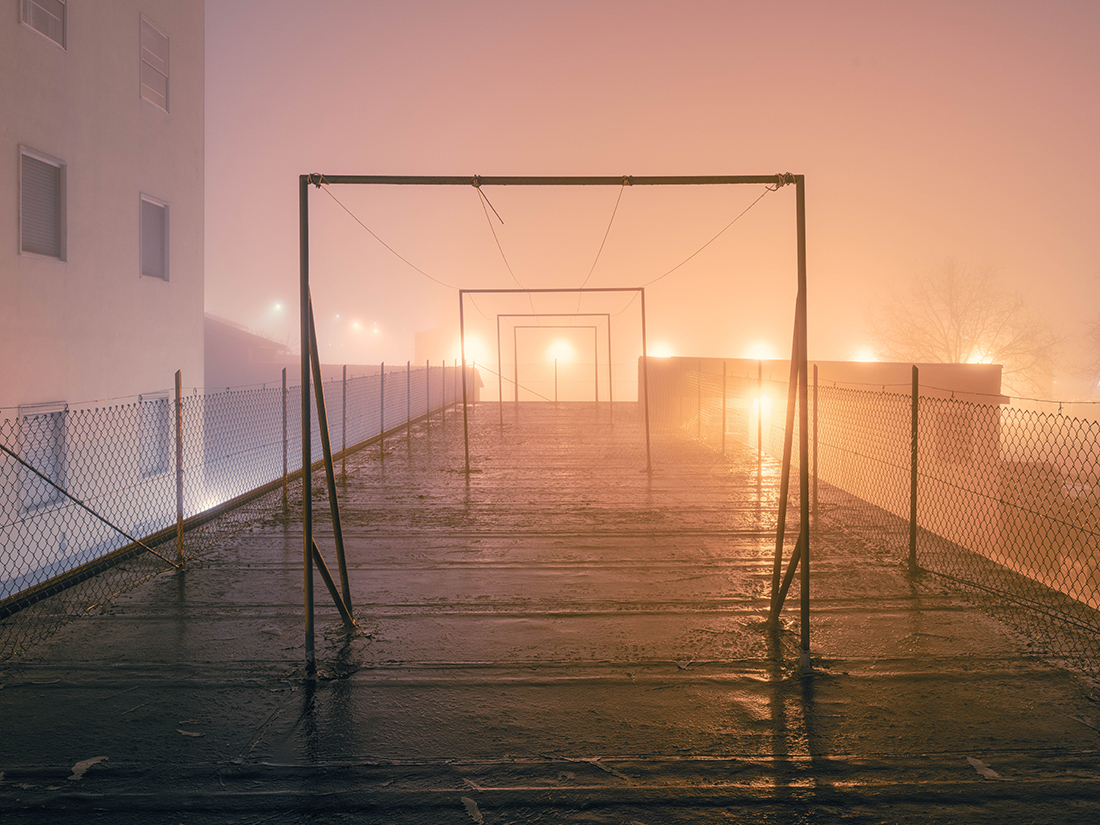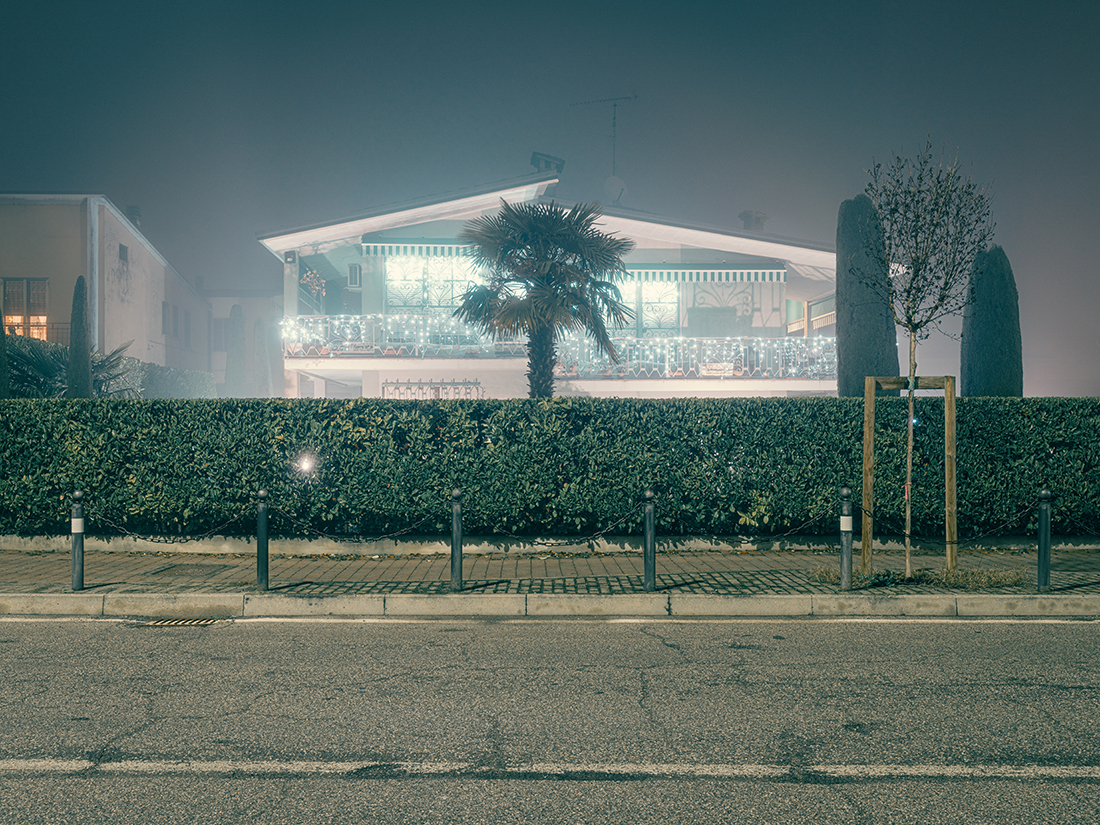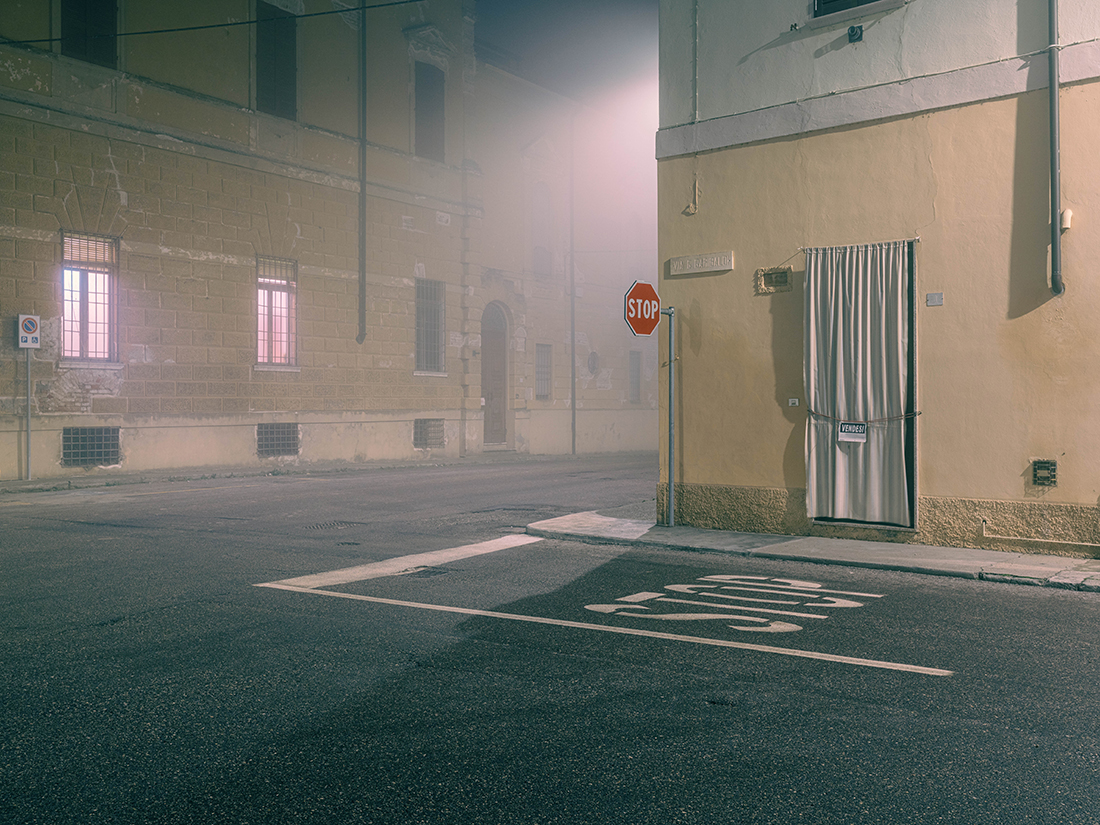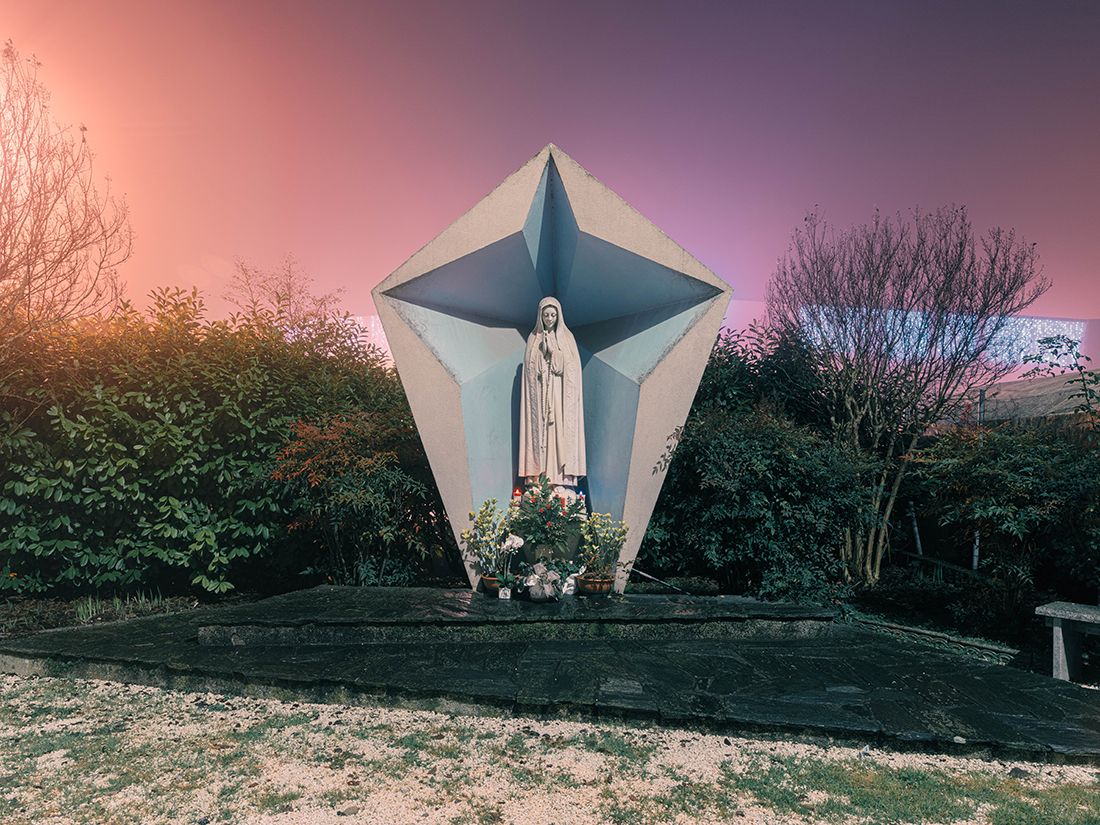honorable mention
Alessandro Zanoni italy
title
As lights on nothing
characteristics through words or signs. And this has been clear for a century now to science, and modern physics,
which has established that objects do not exist except in the eventuality and in relation to the beholder. Above all, Piadena the small hometown photographically portrayed by Alessandro Zanoni, is a place that emerges from personal experience, pouring of memories, and interpretations filtered by his imagination. It is, therefore, a well-founded and not an accidental vision, embraced by the dark, dense, and sinister atmosphere, painted with “light that has broken out into disintegration,” in words taken by Marco Belpoliti, from his book 'Pianura' (Einaudi, 2021). Zanoni grew up and still lives in Piadena, but the domicile does not always coincide with one’s place. Piadena is a land plan devoted to extensive agriculture, at times immeasurable, and to peculiar anonymity, which like the winter fog, prevents us from seeing clearly. Yet in this inevitable and muffled silence, in the nocturnal discretion, through the re-signification of the banal or brutal, Zanoni’s geography takes shape. And that veil of estranging indeterminacy accompanying the vision seems to redeem a right to dream often denied in the provinces. The viewer, like Zanoni himself, remains a spectator, outside the action, on the threshold of an escape, aware of the neorealist sunset of the peasant myth. It is no coincidence that we move between railway tracks and
asphalt, peeling facades, common non-places, artefacts, and uncertain presences, along the silent flow of
ditches, poised between nostalgia and dull modernity. It’s more than a wait, a suspension, a holding
breath in the face of a spell that is hard to explain. As if dazzled by lights on nothing.
My photo essays - shot in Taiwan, South Korea, Japan, the ghost districts of Inner Mongolia, Mainland China and Vietnam - investigate the relationship between cities and humans.
In 2016, I was in China for two artist residencies where I made extensive reports on the city of Wuhan, the development of the cities of Inner Mongolia and the slow disappearance of some urban villages in Shenzhen and Shanghai.
With Steve Bisson’s Urbanautica Institute, I published a book entitled The Post-War Dream, a visual journey in black and white across the principal cities of Inner Mongolia. The project is also a comparison between contemporary China and the Second post-world War Italian urban landscape. It has be presented during the 2018 Paris Photo.
In the course of the years, I travelled across several Asian countries due to some magazine reportage and personal projects. I won several international photography prizes, such as Sony World Photography Awards and Lens Culture, to name a few.
My work has been published in numerous online and print publications including Domus, Life Framer, Vice, Fubiz, Divisare, Photography of China, Creative Boom, Camera Infinita, il Fotografo, Style Magazine and many others.
I’ve exhibited in solo and group shows in Milan, Catania, Naples, Paris, and New York. Some of my shots are on sale on the luxury Italian website Artemest.com
back to gallery
entry description
We pass meaning to places. Geography does not exist unless we observe it, name it, or express itscharacteristics through words or signs. And this has been clear for a century now to science, and modern physics,
which has established that objects do not exist except in the eventuality and in relation to the beholder. Above all, Piadena the small hometown photographically portrayed by Alessandro Zanoni, is a place that emerges from personal experience, pouring of memories, and interpretations filtered by his imagination. It is, therefore, a well-founded and not an accidental vision, embraced by the dark, dense, and sinister atmosphere, painted with “light that has broken out into disintegration,” in words taken by Marco Belpoliti, from his book 'Pianura' (Einaudi, 2021). Zanoni grew up and still lives in Piadena, but the domicile does not always coincide with one’s place. Piadena is a land plan devoted to extensive agriculture, at times immeasurable, and to peculiar anonymity, which like the winter fog, prevents us from seeing clearly. Yet in this inevitable and muffled silence, in the nocturnal discretion, through the re-signification of the banal or brutal, Zanoni’s geography takes shape. And that veil of estranging indeterminacy accompanying the vision seems to redeem a right to dream often denied in the provinces. The viewer, like Zanoni himself, remains a spectator, outside the action, on the threshold of an escape, aware of the neorealist sunset of the peasant myth. It is no coincidence that we move between railway tracks and
asphalt, peeling facades, common non-places, artefacts, and uncertain presences, along the silent flow of
ditches, poised between nostalgia and dull modernity. It’s more than a wait, a suspension, a holding
breath in the face of a spell that is hard to explain. As if dazzled by lights on nothing.
about the photographer
After attending Art school and a graphic design degree at European Design Institute in Milan, I began my professional graphic designer and art director. Music devourer, have collaborated for over a decade with a rock magazine, and passionate about auteur cinema, I approach photography only in 2014 with a strong passion for urban landscape and architecture. In 2017 I attended the Master in Photography at the European Design Institute in Milan.My photo essays - shot in Taiwan, South Korea, Japan, the ghost districts of Inner Mongolia, Mainland China and Vietnam - investigate the relationship between cities and humans.
In 2016, I was in China for two artist residencies where I made extensive reports on the city of Wuhan, the development of the cities of Inner Mongolia and the slow disappearance of some urban villages in Shenzhen and Shanghai.
With Steve Bisson’s Urbanautica Institute, I published a book entitled The Post-War Dream, a visual journey in black and white across the principal cities of Inner Mongolia. The project is also a comparison between contemporary China and the Second post-world War Italian urban landscape. It has be presented during the 2018 Paris Photo.
In the course of the years, I travelled across several Asian countries due to some magazine reportage and personal projects. I won several international photography prizes, such as Sony World Photography Awards and Lens Culture, to name a few.
My work has been published in numerous online and print publications including Domus, Life Framer, Vice, Fubiz, Divisare, Photography of China, Creative Boom, Camera Infinita, il Fotografo, Style Magazine and many others.
I’ve exhibited in solo and group shows in Milan, Catania, Naples, Paris, and New York. Some of my shots are on sale on the luxury Italian website Artemest.com
back to gallery






